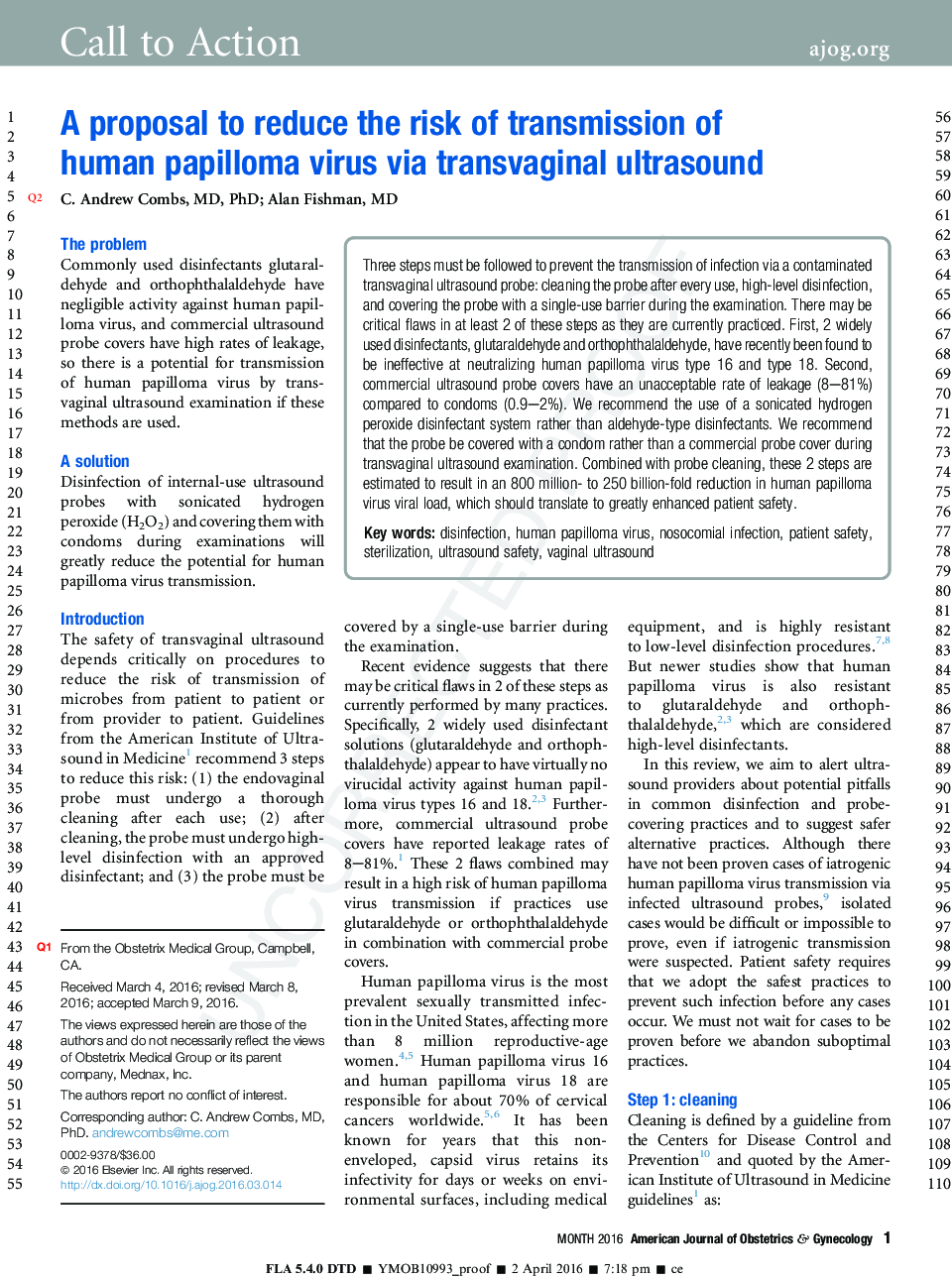| Article ID | Journal | Published Year | Pages | File Type |
|---|---|---|---|---|
| 6143739 | American Journal of Obstetrics and Gynecology | 2016 | 5 Pages |
Abstract
Three steps must be followed to prevent the transmission of infection via a contaminated transvaginal ultrasound probe: cleaning the probe after every use, high-level disinfection, and covering the probe with a single-use barrier during the examination. There may be critical flaws in at least 2 of these steps as they are currently practiced. First, 2 widely used disinfectants, glutaraldehyde and orthophthalaldehyde, have recently been found to be ineffective at neutralizing human papilloma virus type 16 and type 18. Second, commercial ultrasound probe covers have an unacceptable rate of leakage (8-81%) compared to condoms (0.9-2%). We recommend the use of a sonicated hydrogen peroxide disinfectant system rather than aldehyde-type disinfectants. We recommend that the probe be covered with a condom rather than a commercial probe cover during transvaginal ultrasound examination. Combined with probe cleaning, these 2 steps are estimated to result in an 800 million- to 250 billion-fold reduction in human papilloma virus viral load, which should translate to greatly enhanced patient safety.
Keywords
Related Topics
Health Sciences
Medicine and Dentistry
Medicine and Dentistry (General)
Authors
C. Andrew MD, PhD, Alan MD,
